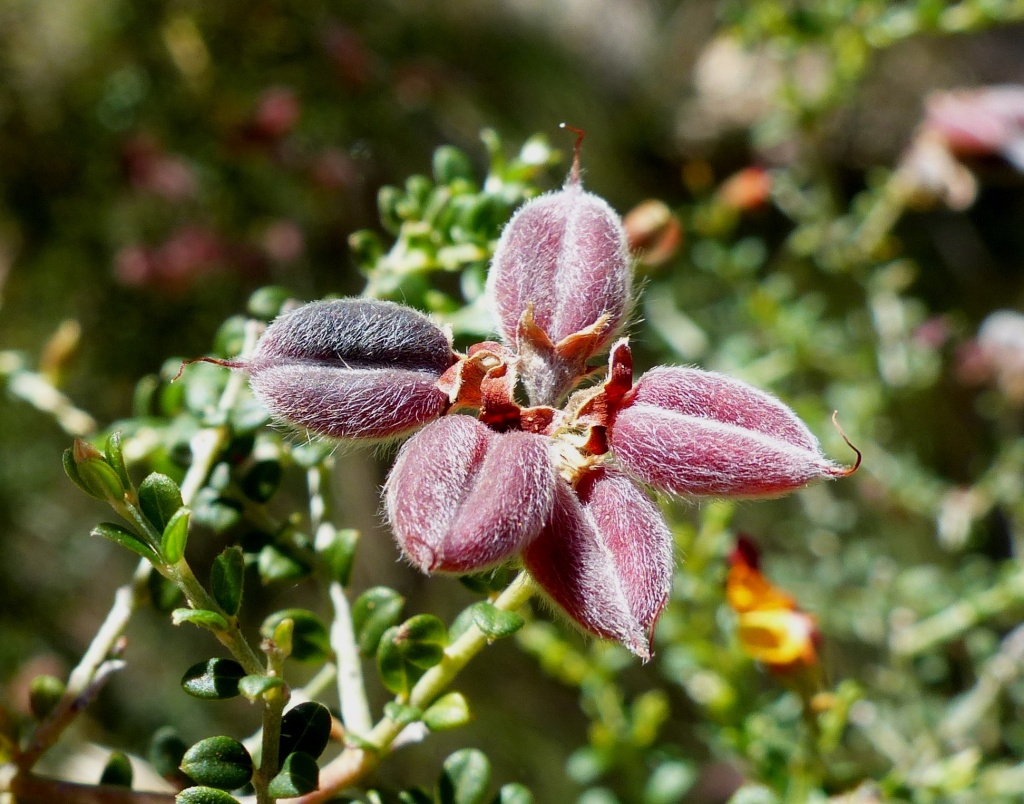Mirbelia
Prostrate or erect perennial shrubs; stems mostly pubescent. Leaves alternate, opposite or irregularly whorled, simple, entire or with pungent pointed lobes, margins recurved or revolute, sessile or shortly petiolate; stipules small and bristly or absent. Inflorescence axillary or terminal, racemose or reduced to single flowers; flowers sessile or shortly pedunculate; bracts small or absent; bracteoles small or absent. Calyx 5-toothed, teeth usually subequal, imbricate, upper 2 often wider and fused above; petals clawed, usually yellow, orange, purplish-red or bluish; standard suborbicular to reniform, emarginate, longer than wings and keel; wings oblong; keel broader than wings and usually shorter; stamens free, anthers uniform; ovary sessile or stipitate, style short, incurved, stigma terminal, capitate; ovules 2–10. Pod ovoid or obloid, turgid, divided longitudinally into 2 cells by a false septum projecting from the lower suture, glabrous or hairy; seeds 2-several, more or less reniform, black, shiny, exarillate.
About 20 species, all endemic to Australia and found in all States except South Australia and Tasmania.
Jeanes, J.A. (1996). Fabaceae. In: Walsh, N.G.; Entwisle, T.J., Flora of Victoria Vol. 3, Dicotyledons Winteraceae to Myrtaceae, pp. 663–829. Inkata Press, Melbourne.
 Spinning
Spinning
